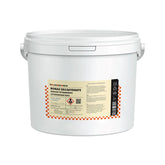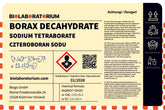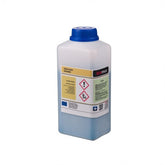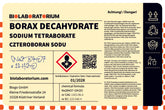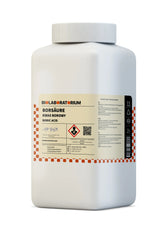Stearic acid - The versatile long-chain fatty acid
Stearic acid, also known as octadecanoic acid, is a long-chain saturated fatty acid that plays an important role in organic chemistry and materials technology. With the chemical formula C₁₈H₃₆O₂, it is one of the most common fatty acids in nature and is used in numerous everyday products.
The Structure and Properties of Stearic Acid
Stearic acid belongs to the group of aliphatic compounds and is classified as a lipid. It consists of a hydrocarbon chain with 18 carbon atoms and a terminal carboxyl group (-COOH). This structure gives stearic acid specific physicochemical properties that are crucial for its diverse applications.
The long hydrocarbon chain causes stearic acid to be solid at room temperature and have a relatively high melting point of about 69.6 °C. Furthermore, it is hydrophobic, i.e., it is water-repellent and has low solubility in water. Instead, it dissolves well in nonpolar solvents such as ethanol, acetone, or gasoline.
Due to its chemical structure, stearic acid can form hydrogen bonds, which influences its crystal structure and melting properties. Additionally, it is relatively stable against oxidation and hydrolysis, which favors its use in many products.
Occurrence and Production of Stearic Acid
Stearic acid occurs naturally in numerous fats and oils, particularly in animal fats such as tallow, butter, or lard. It is also found in vegetable oils such as cocoa butter, coconut oil, or palm oil, albeit in smaller quantities.
Industrially, stearic acid is mainly obtained by hydrolysis of triglycerides from animal fats or vegetable oils. In this process, the triglycerides are split into fatty acids and glycerol under heat and pressure. The stearic acid can then be isolated from the mixture by distillation or crystallization.
In addition to extraction from natural sources, stearic acid can also be produced through chemical synthesis. In this process, ethylene is first converted to ethanol, which is then further oxidized to octanol and finally to stearic acid.
Uses of stearic acid in products
Due to its diverse properties, stearic acid is used in numerous products. Some important application areas are:
Cosmetics and personal care
Stearic acid is used in creams, lotions, soaps, and other personal care products. It serves as an emulsifier, thickener, and skin care component.
Food
In the food industry, stearic acid is used as an anti-caking agent, lubricant, or antioxidant. It is found in chocolate, baked goods, margarine, and other products.
Chemical industry
Stearic acid is an important raw material for the production of surfactants, lubricants, plastics, paints, and dyes. It also serves as a starting material for the production of stearates.
Pharmacy
In the pharmaceutical industry, stearic acid is used as an excipient in tablets, capsules, and other medications. It performs functions such as lubricant, binder, or coating material.
Candles and waxes
Stearic acid is an important component of candles, waxes, and similar products. It gives them the desired firmness and burning properties.
Textiles and leather
In the textile and leather industry, stearic acid serves as a waterproofing agent, softener, or fatting agent.
This diversity of applications shows that stearic acid is an extremely useful and valuable raw material in the modern product world. Its special physical and chemical properties make it an indispensable component of numerous products that shape our daily lives.
Conclusion
Stearic acid is a long-chain, saturated fatty acid with a wide range of applications. Its structure and properties, such as the high melting point and hydrophobicity, make it a valuable raw material in the chemical, cosmetic, food, and pharmaceutical industries. From candles to creams to plastics - stearic acid is found in many everyday products and fulfills important functions there. Its versatility and importance for modern product development make stearic acid a fascinating molecule in organic chemistry.

